Embarking on a residential move parallels setting sail across uncharted waters; it demands meticulous planning and a navigator attuned to the shifting currents. The successful voyage hinges on preparation, and that maxim remains true in the realm of relocation.
Preparation is everything.
Moving homes need not be a Herculean task fraught with stress and chaos. With the right guidance and strategic foresight, you can ensure a seamless transition from your current abode to your new domicile.
Key Points: Residential Moving Made Easy
- Choose a reliable moving company: Consider experience, reputation, licensing, insurance, and customer reviews.
- Prepare for the move: Declutter, create a checklist, notify relevant parties, and pack essential items in advance.
- Efficient packing and moving: Label boxes, organize by room, and create a floor plan for easy unpacking.
- Handle fragile items with care: Consider hiring professionals for safe packing and transportation.
- Communicate with the moving company: Address any concerns, document damages, and inquire about additional services.
Table of Contents
TogglePlanning for a Move
Develop a comprehensive inventory of belongings to discern what will accompany you. This essential first step lays the groundwork for a well-orchestrated move.
Allocate sufficient time for the sorting and packing process, prioritizing items by need and fragility. The efficiency of utilizing color-coded labels for boxes cannot be overstated—they are indispensable for organization and clarity during the move.
Choose a reputable moving company with a history of reliability and excellence. Their expertise will be your compass in navigating the complexities of a residential move.
Crafting a Moving Checklist
A moving checklist is a methodical roadmap, a series of planned actions, delineating every task from pre-move to post-relocation, ensuring all details are covered. It is crucial for a stress-free experience.
From transferring utilities to securing important documents, a “moving timeline” will streamline your moving process. Having a checklist acts as a control system, helping to avoid overlooked tasks or last-minute panic.
On move-in day, fully charged electronics can be essential lifelines.
Before boxing your life into cardboard: inventory possessions, and categorize them for sale, donation, or packing. At each phase – packing, moving, arrival – consult your checklist systematically and make real-time adjustments as necessary. A comprehensive list will be your guide through the complexities of your move.
Timing Your Move Right
Strategically timing your move can lead to a more efficient and cost-effective transition.
- Avoid peak moving seasons, typically between May and September.
- Consider weekday moves to harness the benefits of lower demand.
- Schedule your move with enough lead time to avoid rushed decisions.
- Take into account the weather patterns, opting for a temperate climate if possible.
- Leverage the end of the month for potentially reduced rates, but balance this against increased mover availability earlier in the month.
Securing your preferred moving date early ensures a smoother orchestration of services.
Proactive selection of your moving date mitigates potential stressors, ensuring a tranquil moving experience.
Budgeting Moving Expenses
Approach financial planning for your move with strategic precision, considering all potential costs.
A detailed estimate from a reputable moving company provides a reliable starting point for your budgeting.
Include additional expenses such as packing materials, insurance coverage, and potential storage fees in your calculations.
Anticipate ancillary costs like travel for yourself, time off work, and initial living expenses at your new location.
Conclude with a contingency fund for unforeseen expenses to fortify your financial plan.
Packing Like a Pro
Strategically sort items, segregating them based on room, fragility, and frequency of use.
Invest in quality packing materials—sturdy boxes, packing tape, bubble wrap, and markers—to mitigate the risk of damage during transit. Organize boxes by weight, keeping heavier items on the bottom and lighter items atop, to preserve the integrity of your belongings.
Label each container meticulously, signifying contents and destined room, to streamline the unboxing process.
Necessary Packing Supplies
High-grade boxes form the cornerstone of packing, ensuring items remain secure.
Bubble wrap, packing peanuts, and foam sheets offer layers of protective insulation against jostles and shocks.
Sturdy packing tape is paramount to seal boxes effectively, while labeling stickers facilitate organization.
Specialized wardrobe boxes preserve clothing’s condition, and picture boxes frame your valuable artwork safely.
Remember to include a hefty supply of markers to meticulously label every box.
Efficient Packing Techniques
Systematize your packing sequence for maximum efficiency.
Categorize belongings into various groups to optimize box space and protect items. For example, books should be packed horizontally to prevent spine damage, while plates tend to be safer when packed vertically, similar to how they are housed in a dishwasher. Furthermore, distribute weight evenly to reduce the chances of boxes becoming unwieldy and potentially hazardous for the movers.
Implement a layering strategy in each box.
Use clothing and linens as cushioning around fragile items – it saves space and provides protection.
Aim for consistency in box sizes when possible, facilitating easier loading and stacking. Customary-shaped containers simplify the spatial planning within the moving truck, allowing for a safer and more balanced load distribution.
Optimize your box inventory by employing vacuum-sealed bags for textiles and soft goods, significantly reducing volume and creating more space for your essentials. Keeping abreast with the latest industry innovations, such as “smart” boxes developed in 2023 can also benefit your move, offering enhanced resilience and sometimes even integrated tracking capabilities for a worry-free experience.
Labeling for Unpacking Ease
Meticulous labeling serves as the linchpin in ensuring a streamlined unpacking process post-relocation. Color-code by room and clearly mark the contents, paying close attention to items requiring immediate attention or delicate handling.
Use broad, permanent markers to make labels visible from a distance.
Strategically, indicate the destination room on the box’s top and sides, guaranteeing visibility no matter the orientation (assuming the boxes are of uniform dimension).
Boxes containing essentials should bear distinctive markings or phrases, such as “Open First” or “Priority,” ensuring they are readily accessible.
Incorporate a detailed list of box contents as an external manifest, which can be cross-referenced during unpacking. This minimizes the quest for specific items and expedites the organization of your new space.
Finally, it’s vital to number each box, which aids in tracking your possessions and confirms that no items go astray during the transition. This systematic approach streamlines the settling-in phase, making it nearly as efficient as the packing process itself.
Choosing Movers Wisely
When selecting a moving company, an astute approach is critical. It’s essential to conduct a thorough evaluation of potential movers, which includes verifying their licensing, insurance coverage, and reviewing their track record for reliability and customer satisfaction. Investigate online reviews and ratings, but also pursue personal recommendations if available. Request comprehensive, transparent quotations and ensure you understand the services included. A prudent choice will alleviate much of the moving process’s inherent stress, setting the foundation for a smooth transition into your new abode.
Researching Moving Companies
Selecting a reputable moving company is foundational to a successful relocation. Here is an ordered list that outlines a meticulous approach to vetting potential movers:
- Assess Credentials: Verify the company’s USDOT (U.S. Department of Transportation) number for interstate moves, and appropriate state licensing for local relocations.
- Investigate History: Look into the moving company’s longevity in the business and read through customer testimonials and authoritative reviews.
- Inspection of Insurance and Liability Options: Confirm that the mover has adequate insurance to cover potential damages or loss.
- Evaluate Transparency: Analyze the clarity and completeness of the movers’ quotes, ensuring there are no hidden fees.
- Personal Recommendations: Solicit firsthand accounts of the company’s service level through referrals from trusted sources.
- Compare Services: Match your specific moving needs with the company’s offerings, understanding any additional costs for special services.
- Quality and Training of Staff: Check the professionalism and expertise of the moving crew, which directly impacts the safety and efficiency of your move.
This process will guide you towards a trustworthy and competent mover.
Understanding each facet of the moving company’s service offerings is crucial.
An informed decision will grant peace of mind and set the stage for a seamless moving experience.
Understanding Moving Insurance
Moving insurance is essential for protecting your belongings during transit.
- Valuation Coverage: Understand the mover’s provided valuation options, which is not insurance, but a predetermined limit of liability.
- Full Value Protection: If opted, this insurance covers repair, replacement, or reimbursement for the item’s current market value.
- Released Value Protection: The most economical protection available that offers minimal compensation.
- Third-Party Insurance: Consider additional insurance from an independent company for full coverage.
It’s important to assess the level of protection you need and choose accordingly.
Be sure to review the terms and potential deductibles of any moving insurance policy.
Making the Final Decision
Selecting a mover is a decision that reflects trust, budgetary constraints, and a personal comfort level with the services offered. Evaluate company reputation, customer testimonials, and the comprehensive moving solution they present to confirm your selection aligns with your expectations.
Weigh the services against their costs to ensure the investment is justifiable. Look beyond the price to understand the value offered.
Ultimately, your choice should be a blend of financial feasibility and confidence in the mover’s ability to deliver. Gauge the transparency (availability of company licenses, insurance details) and professionalism exhibited during your interactions.
Ensure thorough examination of all contractual documents, paying special heed to clauses on logistical timelines, handling of valuables, and outlined responsibilities. A meticulous approach here can prevent misunderstandings and secure a more manageable moving experience.
While cost is often a primary factor, the cheapest option may not equate to the best service. Reflect on the mover’s reliability, support, and the insurance arrangements to ascertain that your possessions will be in capable hands during the transition.
Remember, this decision will shape your moving journey. Make an informed choice that prioritizes professional integrity and service quality to ensure a smooth relocation.
Moving Day Success
Thorough preparation sets the stage for a seamless transition when moving day arrives. Establish a clear timeline and communicate expectations with your movers to synchronize efforts.
As the cornerstone event, ensure that all boxes are methodically labeled and inventoried—furniture disassembled with hardware secured—to facilitate efficient loading and positioning in your new residence. Your meticulous pre-move groundwork will significantly expedite this phase.
Designate a moving day point person to oversee operations; their directive to troubleshoot on the fly is essential in maintaining momentum and addressing any unforeseen challenges.
Essential Day-of Tips
On the morning of the move, perform a final walkthrough of every room. Verify that nothing has been overlooked and all items are ready for transport. This act ensures you leave no belongings behind.
To support the movers, establish an unobstructed path to and from the truck. Secure pets and clear away debris or hazards—such as ice or snow from walkways and driveways—to guarantee safe and swift loading of your possessions. These preventive measures minimize the risk of injury or delay, streamlining the moving process. Additionally, preparing a essentials box with items like toiletries, snacks, and important documents can alleviate stress during the first night in your new home.
Equally important, stay available for consultation with your moving crew throughout the day. Promptly address their questions or provide guidance, ensuring a collaborative environment. Your active participation assists in the accurate placement and careful handling of your items, reducing the likelihood of errors or miscommunication.
And finally, maintain a detailed inventory list to cross-check your belongings upon arrival at your new home. Confirm that all pieces have been delivered and are undamaged. This level of vigilance fosters accountability and provides peace of mind. Should any discrepancies arise, this documentation is pivotal for resolving any claims with the moving company, ensuring your rights and interests are adequately protected.
Coordinating with Movers
Effective coordination hinges on precise communication, particularly during the collection and transportation stages. This foundation ensures expectations are aligned with the service’s execution.
It’s paramount to establish a clear plan of action with your movers. A comprehensive walkthrough, manifest detailing, and time-specific milestones set the stage for a seamless relocation. Employing these preparatory measures eases the transition for both household members and the professionals handling your valuables. When every detail is meticulously arranged, the likelihood of complications diminishes, reinforcing a smooth relocation experience for all involved.
Moreover, clarity in labelling boxes significantly aids the moving team. By indicating room destinations and handling instructions, movers can strategize the loading and unloading phases efficiently. A well-organized system minimizes confusion and expedites the settling-in process upon arrival at your new abode.
In addition, open lines of communication on moving day are vital. Real-time updates on progress and any obstacles encountered enable swift resolutions. Directing the team upon arrival ensures that each item is placed according to plan. Such orchestration prevents the need for post-move reorganization, conserving energy and time. Being available to make on-the-spot decisions is essential for guiding the moving team’s efforts, establishing a synergy that guarantees a satisfactory relocation outcome.
Creating a First-Day Survival Kit
A First-Day Survival Kit is indispensable for alleviating moving day stress. It should contain essentials that cater to immediate needs upon arrival.
Imagine stepping into your new residence; amidst the sea of boxes, certain items are crucial for instant accessibility. Your First-Day Survival Kit should act as a portable resource center.
Tailoring the kit to your personal and family requirements ensures comfort during the first hours in your new home. Items like toiletries, medications, chargers, and snacks should be included without fail.
Consider adding a change of clothes, basic tools, and important documents to your kit. This way, essential needs are addressed while the rest of your possessions are being sorted.
Remember, the objective is to prevent last-minute runs to the store or rummaging through boxes. A thoughtful First-Day Survival Kit is a cornerstone for a seamless transition.
Frequently Asked Questions
Residential Moving Made Easy: Expert Tips and Guidance
What is residential moving?
Residential moving refers to the process of relocating from one home to another, whether it’s within the same city or to a different state or country.
How do I choose a reliable residential moving company?
To choose a reliable residential moving company, consider factors such as their experience, reputation, licensing, insurance coverage, and customer reviews.
What services do residential moving companies offer?
Residential moving companies typically offer services such as packing, loading, transportation, unloading, unpacking, and even storage options if needed.
How can I prepare for a residential move?
To prepare for a residential move, start by decluttering and organizing your belongings, creating a moving checklist, notifying relevant parties of your address change, and packing essential items in advance.
How long does a residential move usually take?
The duration of a residential move depends on various factors, including the distance, size of the home, amount of belongings, and any additional services requested. It’s best to consult with your chosen moving company for a more accurate estimate.
What should I do if any of my belongings get damaged during the move?
If any of your belongings get damaged during the move, promptly notify your moving company and document the damage with photographs. Most reputable moving companies have insurance coverage to compensate for any damages.
Can I pack and move fragile items myself?
While you can pack and move fragile items yourself, it’s recommended to hire professionals for their expertise in handling delicate belongings. They have the necessary packing materials and techniques to ensure the safe transportation of fragile items.
How can I make my residential move more efficient?
To make your residential move more efficient, consider decluttering before packing, labeling boxes clearly, organizing items by room, and creating a floor plan for your new home to streamline the unpacking process.
Is it necessary to tip the residential movers?
Tipping residential movers is not mandatory, but it’s a common practice to show appreciation for their hard work. If you’re satisfied with the service provided, consider tipping the movers accordingly.
What should I do if I have additional questions or concerns?
If you have additional questions or concerns about your residential move, don’t hesitate to reach out to your chosen moving company. They will be happy to address any queries and provide further guidance.



